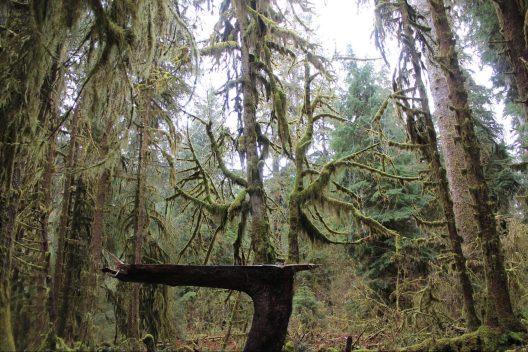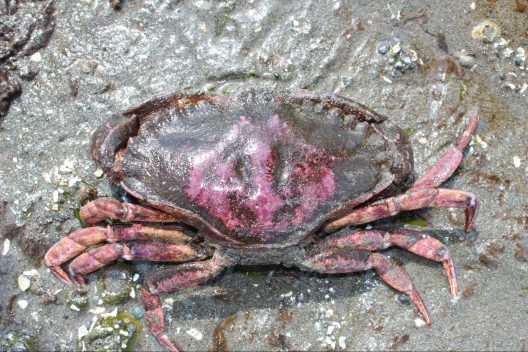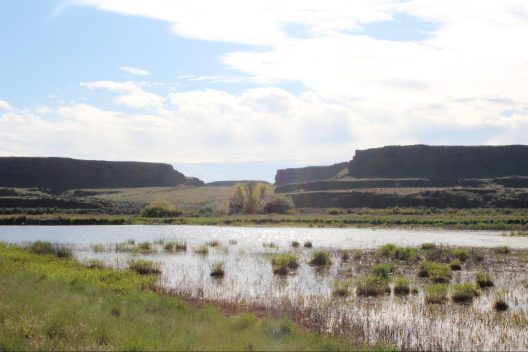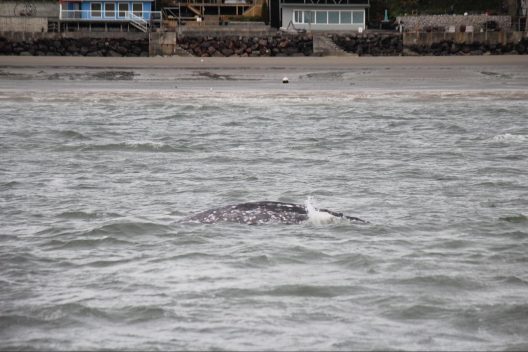The Act of Noticing the Small, the Big, and the In-Between in Washington State Ecosystems: What Field Ecology Has Taught Me About the World
As the end of my first year in graduate school approaches, time has passed by rather quickly. Like an old friend, Mother Nature has extended a hand and helped me ground myself as I powered through the academic year. Particularly, my teaching assistantship and the friends I have made in my program provided meaningful experiences that allowed me to take time to observe the world with childlike wonder in my floral rubber boots and many bucket hats. Through this article, I hope to take you on a journey of discovery as I share my unforgettable moments exploring the many ecosystems Washington offers. In this context, an ecosystem refers to a collection of living and non-living things that have distinct intrinsic relationship-based connections that foster the existence of what we call nature. This definition does not exclude the human dimension of the natural world, as we are closely intertwined with and derive strength from nature every day. I credit this learned perspective to Indigenous traditional ecological knowledge, which highlights this holistic relationship between all living and non-living things in culturally and place-based land management practices.
As a teaching assistant for BIO 480 Field Ecology with Dr. Dee Boersma, I have learned just as much as I have taught. Hannah Burkhart, a peer TA and former student of this class, told me that she has sat in many biology lectures with hundreds of students, yet had never learned as much as in this class. I certainly agree with her and am incredibly lucky this position gave me the chance to fall in love again with the world around me. These experiences are some that I would never trade for anything in the world.

The Small
We start with the small and dive into the magical world of tide pools. Upon walking around the intertidal zone, many may think that a bunch of craggy rocks don’t have much to offer. It is, however, what hides underneath them that provides a new perspective of how intricate the small scale can be. The first critter of interest is the crab. There are a few crab species found in Puget Sound, yet not all are native to the area. Amongst the natives are the hairy shore, helmet, purple shore, kelp, pacific rock, graceful, red rock, and Dungeness crabs. The non-native European green and the Chinese mitten crabs have become some of the most prominent invasive species along Washington’s coastline. During one of our field trips, students flipped rocks in the intertidal zone and recorded the size, sex, species, and distance from the tide to investigate the distribution and diversity of crabs at various tide heights. Most of the crabs we found were European green crabs; this exercise proved important in demonstrating the scale of invasion of particular species.
While helping students find crabs, I came across one that looked rather unique. The professor asked if I knew what kind of crab this was with a glint in her eye and I answered honestly that I didn’t know. She told me that I had found a juvenile Dungeness crab, which was about 4 times the size of other crabs and is named after the Dungeness Spit in Washington. This got me thinking of the lessons to be learned by looking at this particular ecosystem. Even as some systems are disrupted, nature finds a way to restore balance. Dungeness crabs not only grow to be larger, but a female can carry clutches of 2.5 million eggs compared to European green females who can lay about 185,000 eggs at a time. This is all to say that it is important to look at small interactions to learn about the larger patterns in the world and put particular stressors into perspective.

Another ecosystem that can provide key insight into the world is glacier lakes. As the planet warmed, massive glaciers receded and subsequently deposited crater formations that retained water and became lakes. Within these lakes, many insect species use the water for transformative growth. Of these species, nymphs are the larval stages of odonates (dragonflies and damselflies) that start their tiny lives in water before growing and emerging wing pads and later wings. These small carnivorous insects have a mouth that extends into a spoon-shaped chin with three lobes that trap prey, including individuals of the same species. Even though insects often sound like miniature nightmares, they are incredibly important as both a food source for other species like birds and an indication of watershed health. In our odonate sampling, we happened upon a species of worm with hemoglobin present in their bodies, which indicates that the lake was low in dissolved oxygen as the worms had found a way to store dissolved oxygen within their tissue.
“Through her class, Professor Dee helped us understand and evaluate the value of nature and all its nuanced interactions, including tiny critters we often don’t look too closely at.”
Odonate distribution and frequency can also indicate particular pressures like predation from fish, providing insight into the intricacies of food webs, even when some species prey on their own. I am not particularly a fan of bugs, but I have recently come to respect the invaluable role they play in their ecosystems. Through her class, Professor Dee helped us understand and evaluate the value of nature and all its nuanced interactions, including tiny critters we often don’t look too closely at.
The Big

Standing before a vast and expansive landscape of carved-out volcanic basalt bluffs and valleys of dry earth peppered with sage, we now turn to the drastic difference in ecosystems between the lush, wet, and mossy forests and coasts of the West and travel to the dryness of the Columbia Wildlife Refuge, arid shrubsteppe ecosystem found east of the Cascades. The refuge has been used as a microcosm of study for the Field Ecology course for decades, and what we saw upon arrival was a massive event that changed the earth forever.
Chane is good at continuing to chip away at the stasis of life on Earth and altering the world in both subtle and cataclysmic ways. In this case, a massive flood occurred thousands of years ago as a glacial dam fell apart with increasing global temperatures, releasing water moving as fast as 60 miles per hour through the area, which then joined with the Columbia River and later the sea. The water did not stick for long, and the Columbia River Basin was formed. However, with human intervention, the Yakima River Basin Water Management Plan was formed to redirect water from the river to the deserted area to support agricultural and community needs.
Even though the reintroduction of water may serve modern needs, Professor Dee taught us to look at all angles of man-made alterations and their ability to change the natural balance in particular areas. In this case, the introduction of water has allowed invasive vegetative species like phragmites and canary grass to establish themselves in an ecosystem that primarily supports cattails. Particular bird species, like the red-winged blackbird, use cattails to build and shelter their nests and are experiencing pressure from yellowheaded black birds who push them out of their territories. In addition to the introduction of water, trout, and other fish species have been added to particular bodies of water in the wildlife refuge, which has predatory impacts on many larval stages of insects. This is all to say that some major natural events have major impacts, and some seemingly small human interventions can too. It is therefore important to look at how individual and collective action can alter the fabric of the world around us with intentional and holistic perspectives.

The last experience I want to write about is a team bonding trip with my fellow capstone members. One of my teammates works on a whale-watching boat that surveys Puget Sound for residential and visiting megafauna and invited us on for an afternoon. I learned that, in addition to resident orca pods, gray, humpback, minke, and fin whales can be spotted in the area depending on their social, nutritional, and health needs. We encountered a few gray whales and some seals snoozing on buoys. The whales themselves were a sight beyond, but their power to bring people together in awe, silence, excitement, and curiosity is something I have truly cherished from this experience. Living in Seattle for the past few years has taught me that state residents have a particularly strong relationship with whales. Witnessing other people’s connection to other living creatures always fills me with hope and the continued passion of facilitating moments for others to connect to the beauty of nature such as this one. It reminded me of my childhood memories of whale watching on the East Coast and its influence in instigating my passion for marine and environmental sciences.

The In-Between and The Importance of Community and Student Engagement in All Things Nature
I recall Professor Dee speaking to students about the vitality of Field Ecology as a course offered at UW in a Renaissance-like moment—the camp light flickering in the middle of the students seated around the picnic table, concentrating on every word being spoken. It inspired me to consider how I could extend her efforts and facilitate the learning journey for others like me and the students I help teach. I specifically hope to educate students and my community about how to be ethically engaged or conscious of the intricacies of human-to-human and human-to-nature interactions in meaningful opportunities that increase community resiliency. It is vital to remind future generations of not only what is important to protect, but also how to protect it and all its moving parts consciously. Being in the field instead of a classroom has been integral to increasing student engagement with the natural world. By exposing them to field ecology, students may be inspired to work in career fields that help protect what they studied, like state, federal, or Tribal environmental and resource management agencies, educational outreach programs, academia, and so much more. But most importantly, I hope I helped them notice the many scales the natural world takes and the things we can learn from them: the small, the big, and the in-between.